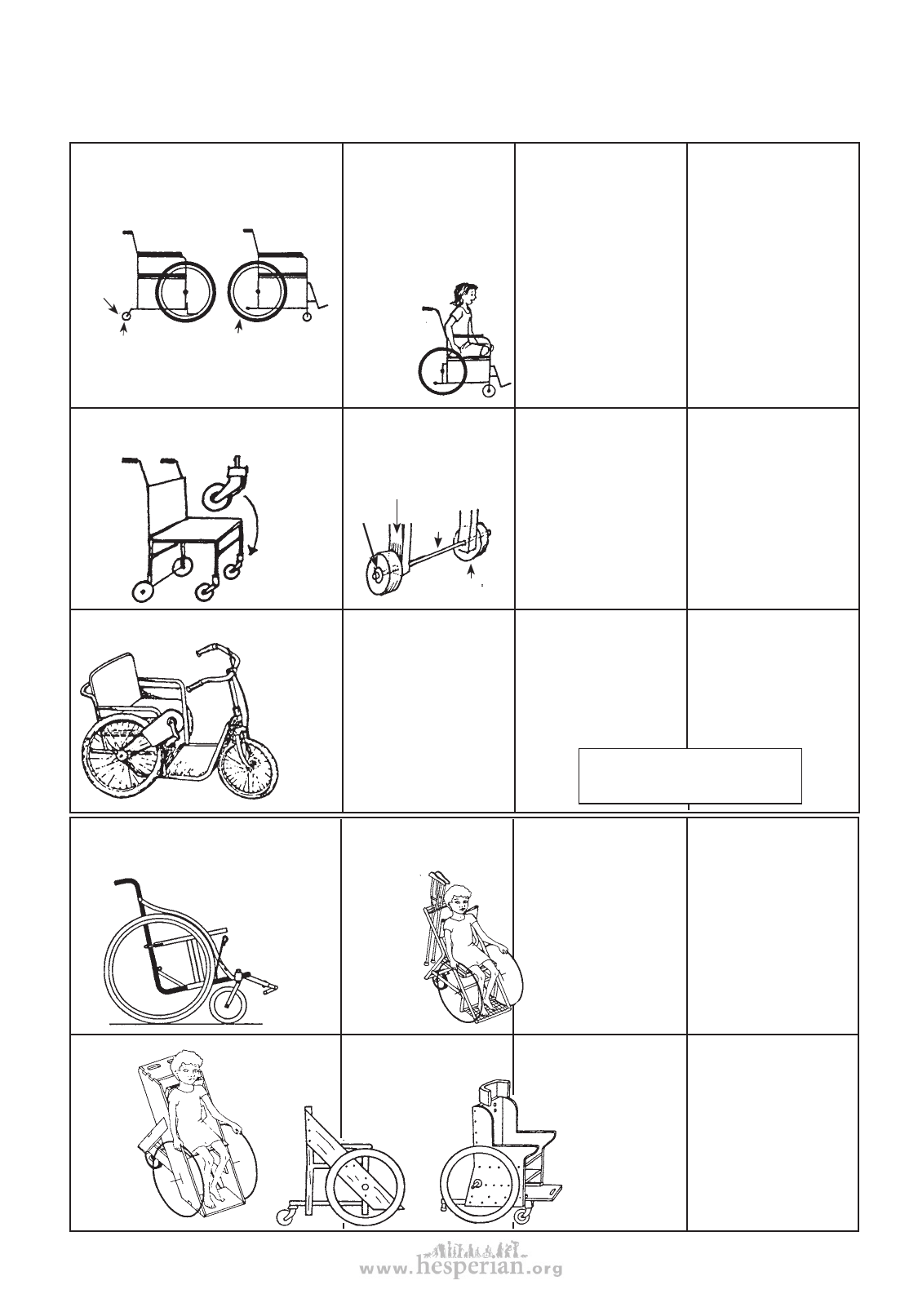
594 chapter 64
Design choices for wheelchairs
FEATURE
DESIGN DETAILS
WHEEL SIZE AND POSITION
2 big wheels with 1 or 2
small caster wheels
INDOOR
OUTDOOR
one or
2 rear
wheels
rear wheel set
back to avoid
tipping backward
on slopes
Child’s weight
should be mostly
over big wheels.
4 small wheels
casters
for
easier
turning
• Large wheels let rider
push herself.
• Small caster wheels
allow easy turns (on
cement, not sand).
• For leg amputees,
rear wheels
must be
moved
back to
prevent
tipping
over
backward.
Very simple temporary
chairs can be made by
putting 4 wheels on an
ordinary wood chair.
chair leg
pin rod
3 big wheels
wheels
hand crank
and
steering
• You can use 3 bicycle
wheels.
• Some models have
removable front
wheels so that chair
can be easily changed
to have small front
wheels for use inside
the home.
ADVANTAGES
• Child can move
it herself if she
has hand and arm
control.
• Large wheels
go over rough
surfaces easier.
DISADVANTAGES
• takes up more
space
• harder to get in
and out of from
the side (because
wheels need to be
higher than seat
so that rider can
push herself)
• good only on
smooth floors for a
child who cannot
push or help
push his own
chair
• cheaper
• takes up less space
• easier to move child
in and out of.
• not good on rough
surfaces
• Child cannot move it
herself.
• creates dependency
• excellent for long
distance and rough
road travel
• can be used by
a person with
strength in one
hand only
• too big for use
inside home
• more costly
• more difficult to
make
Some riders have 2 chairs: one like
this for road travel, and a smaller
one for home or work.
BUILDING MATERIAL FOR FRAME
Steel tube
Whirlwind
wheelchair
See p. 622.
Wood
Healthlink
Worldwide
model
• Thin-walled electrical
conduit tubing can
be used—5/8 inch to
1 inch
diameter.
Healthlink
Worldwide
design, see
p. 604.
For wood design details,
see p. 615 and 620 and
references on p. 604.
wood chair
model
design p. 615
A strong, long-lasting,
fairly light chair can
be made better and
cheaper than most
commercial chairs.
• relatively cheap and
easy to make—mostly
wood, few or no
welds
• easy to
adapt and to
add special
supports or
tray tables
plywood model
design p. 620
• requires welding
skills, some design
ability, and a fair
amount of equipment
• a good chair for
a well-equipped
rehabilitation
center workshop
to build, but not a
family
• builders need to be
trained
• May not be as stable
and long-lasting as
other models.
(For tighter joints and
more adaptability,
use nuts and bolts
instead of nails.)
Disabled village Children